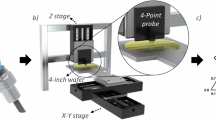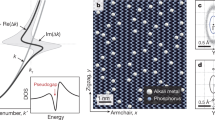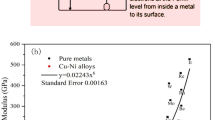Abstract
MANY of the properties of metals are satisfactorily accounted for in terms of relatively simple models. The cohesive energy even of pure metals presents problems, however, and any experimental evidence that helps with an understanding of the behaviour of the conduction electrons is valuable.
This is a preview of subscription content, access via your institution
Access options
Subscribe to this journal
Receive 51 print issues and online access
$199.00 per year
only $3.90 per issue
Buy this article
- Purchase on SpringerLink
- Instant access to full article PDF
Prices may be subject to local taxes which are calculated during checkout
Similar content being viewed by others
References
Weiss, R. J., X-Ray Determination of Electron Distributions, 82 (North-Holland, 1966).
Freeman, A. J., and Watson, R. E., International Tables for X-Ray Crystallography, 2, 202 (Kynoch Press, 1962).
Batterman, B. W., Chipman, D. R., and De Marco, J. J., Phys. Rev., 122, 68 (1961).
De Marco, J. J., Phil. Mag., 135, 483 (1966).
Arlinghaus, F. J., Phys. Rev., 153, 743 (1967).
Cooper, M. J., Phil. Mag., 8, 811 (1963).
Brill, R., Solid State Phys., 20, 16 (1967).
Bensch, H., Witte, H., and Wolfel, E., Z. Phys. Chem., 4, 65 (1955).
Watson, R. E., and Freeman, A. J., Phys. Rev., 123, 521 (1961).
Harrison, W. A., Pseudopotentials in the Theory of Metals, 227 (W. A. Benjamin, 1966).
Author information
Authors and Affiliations
Rights and permissions
About this article
Cite this article
MEDLIN, E., DINGLE, R. & FIELD, D. Wave Functions of the Conduction Electrons in Crystalline Aluminium. Nature 224, 581–583 (1969). https://doi.org/10.1038/224581a0
Received:
Issue date:
DOI: https://doi.org/10.1038/224581a0



